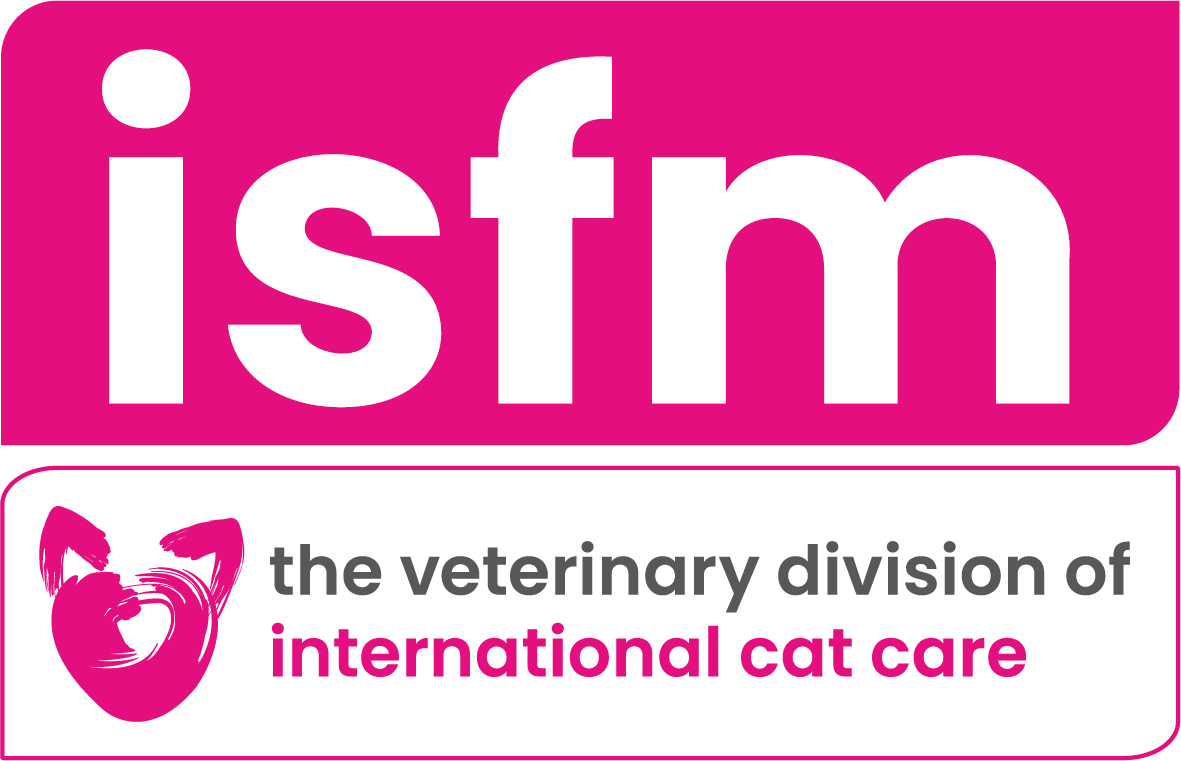
Teach Any Cat AeroKat* - 1: Creating Comfort
This video on Creating Comfort with the AeroKat* chamber is part of our Teach Any Cat AeroKat* video series.
This training series was created with two leading cat behavior experts from International Cat Care; a Certificated Clinical Animal Behaviorist and trainer; and Head of Cat Advocacy and author of the best-selling book “The Trainable Cat”.
Teach Any Cat AeroKat* Full Series
Developed in partnership with the International Society of Feline Medicine (ISFM), the veterinary division of parent charity International Cat Care.
Goals of AeroKat* and Inhaler Training
The overarching goals when training cats for comfort in use of the AeroKat* chamber are for them to:
- approach the chamber,
- voluntarily put their nose in and hold it there,
- and take calm breaths until their treatment is complete.
This can take a while to train, as there are many steps involved, so breaking it down and keeping it positive is vital!
Actively participating in their inhaled therapy reduces anxiety and frustration for cats. This helps not just with medication provision, but stress can make respiratory conditions worse, so calm is key.
Positive training gives cats control over their own bodies, allows them to set the training pace, and helps them feel safe. Thus, caregiver and cat are more likely to succeed with inhaled therapy use.
Getting Started with Training
Before introducing the AeroKat*, first teach your cat to be relaxed with a variety of new things that approximate elements of the chamber.
Examples of what you will need include:
- different sized openings to place the nose into, such as large, medium and small plant pots and toilet rolls
- different, non-offensive scents and sounds, so that your cat is primed to cope with both the scent and hiss sound of the medication when dispensed by the inhaler.
A mobile ‘phone is useful to time sessions, so they don’t go on too long - one minute is ample. A ‘phone can also be used to play recorded inhaler sounds, later in the training.
You also need ways to reward your cat.
Reward Based Cat Training
Cats are individuals in their likes and dislikes, so you may want to “interview” them prior to training. Some like to work for food - e.g. part of their daily ration, others will need to be offered tastier treats, some like calm petting as a reward, and some like variety. Be sure the reward is your cat’s choice, and that it is welcomed!
For food rewards, small amounts frequently delivered will lead to greatest success. Solid food should appear no bigger than about half the size of your smallest finger nail, or - for paste - one small lick.
An alternative to timing sessions could be to count the number of rewards given per session, with 7-10 being ideal, then stop.
Working With Your Cat
Whilst you know what the goals of training are, your cat doesn’t! Breaking goals down into many smaller sub-goals, representing approximations of the finished, entire behaviours will lead to successful outcomes.
The first goal is for your cat to voluntarily approach and explore the AeroKat* chamber and training equipment whilst remaining relaxed and content. Gradually, work towards them putting their nose in the mask, first making it easy for them, to build confidence, then working towards harder aspects, such as teaching them to hold their nose in the enclosed mask - each of which are specific skills in themselves (please see our further videos for step-wise training).
Build comfort with a variety of sounds and scents, so as to make AeroKat* chamber use “no big deal”, i.e. by teaching that lots of different and new sights, scents and sounds are no threat, and bring good things. This way, when the AeroKat* chamber is introduced, your cat will look forward to interacting with something new, without it concerning them.
Teach your cat to be comfortable with having their face wiped, watching and hearing manipulation of the chamber, including the “hiss” noise made by the inhaler, and to take multiple relaxed breaths while holding still in the mask.
Each piece is trained separately, and then gradually put together and layered, to create the whole sequence.
Cats are Always Learning
Cats are constantly learning and doing what works for them (or avoiding what doesn’t), through making associations. Learning by association happens in two ways. One is a simple process of “this predicts that”. For example, the positive associations created by the AeroKat* chamber predicting rewards (food or treats).
The other associative process is based on associations made with the outcome of cats’ own behaviour. Good outcomes mean the behaviour is likely to occur again, and your cat will try it more; whereas negative outcomes mean the behaviour won’t be tried again. For example, if placing their nose in the mask results in valued rewards, your cat will approach the mask more; whereas if the mask appears threatening, or treatment is forced, your cat will become anxious and choose to avoid treatment, meaning they may become ill, and - potentially - the relationship with the caregiver damaged.
Cat Training Techniques
Shaping
Shaping is the rewarding of successive approximations of the final goal behaviour. It is used to move from easier towards harder sub-goals, to reach the final three goals.
Interest in the AeroKat* chamber can be kick-started with the use of luring. For example, begin with your cat approaching and sniffing food placed in the mask. Over many repetitions, with time and care taken to shape towards this, your cat learns to rest its nose in the mask and hold it while taking multiple breaths. Gradually, use of the lure is reduced, so that your cat can do this without food in the mask but instead, receiving food after performing the behaviour.
Once behaviours are well understood, a verbal signal (or “cue”) can be added (see our Step 3 training video)
Marking
To achieve the training goals, “mark” the exact moment your cat offers the desired behaviour. The marker is simply a “click” sound, or specific word. Each click lets your cat know that the reward for the specific behaviour just offered will shortly be delivered. Your cat learns that the marker predicts the arrival of food when it does that specific behaviour. A marker is essential as it is not always possible to deliver the food at the exact time the desired behaviour occurs, for example, when the nose is in the mask, therefore the marker acts as a “bridge”.
First, develop the predictive relationship between click and food. (Note - this is not yet being used for mark-and-reward training, where a specific desired behaviour would be being taught.)
Working With Your Cat
If your cat doesn’t seem in the mood (e.g. disengaged or distracted), is over excited (e.g. grabbing food), or seems worried (e.g. quiet, avoidant, twitching tail) - stop! If in doubt, take a break. It is always better to take a step back than proceed if things aren’t working and positive. Go slow to move forward! Be sure your cat is happy, engaged, comfortable and in control of the pace and interactions during training. Now you are ready to move on to Step 2. Keep up the great learning together!


